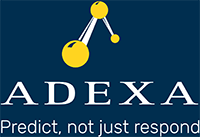Scope 3 Carbon Reduction and ESG with Attribute Based Planning
According to Scope 3 Peer Group, almost 90% of companies surveyed are using or looking for a solution for their Scope 3 program. By far the majority are looking for a third-party solution. There are several disparate solutions that are currently known. However, they only partially satisfy the users’ functional requirements. For example, there are solutions only focused on Greenhouse Gas (GHG) measurement, and some on ESG. Furthermore, some are designed for the internal operations and some for the entire supply chain. By far most solutions address measuring the related factors rather than providing insight, let alone recommendations to reduce emissions or lack of compliance. Just having visibility in such a complex environment is not enough and analytics and insights are essential.
At Adexa, our approach has been to integrate and consider factors such as ESG and GHG as constraints built into each supply chain plan produced by the system. This is the case whether the plan is for internal operations or for the entire supply chain. Every plan that is produced carries a measure of how well the company is expected to perform regarding such factors. Just like we have profit and loss KPIs, we would also see ESG and GHG KPIs for every plan. This is done by the use of Attributes and Attribute Based Planning (ABP) architecture of Adexa.
Attributes by themselves are just properties but attribute-based planning is an architecture that uses these properties as constraints to deliver an accurate and desired plan. Attributes imply the behavior of each object in the supply chain. examples are skill of a person, GHG factor of an equipment or site or transportation route, ambient temperature of a warehouse, speed of a processor, shade of a fabric, qualification of a supplier and so on. ABP uses these values as “constraints” and searches the space to match the requirements (customer orders or management objectives) to the values of the resources and methods of making and delivering. Thus, finding and producing a solution out of millions of possibilities that closely satisfies the objectives of the company and customer specifications.
The values attributed to each object in the supply chain could be absolute or relative measures of the applicable ESG factors. For example, supplier A produces lower GHG than supplier B. To this end, when possible, the system plans to use supplier A, if so qualified. However, supplier A might be more expensive than B or have longer leadtimes. Such conflicts between management-specified objectives are resolved using Adexa’s unique approach to multi-objective planning strategy to choose the “best” possible solution.
Lastly, the approach described above can limit the emission factors as specified by the management. Hence producing plans based on a combination of elements in the supply chain that do not exceed a certain total value. Thus, the trend can be observed over time as to how effectively the company has performed meeting its Scope 3 goals. Now that should put a smile on the face of everyone in the next board meeting!



